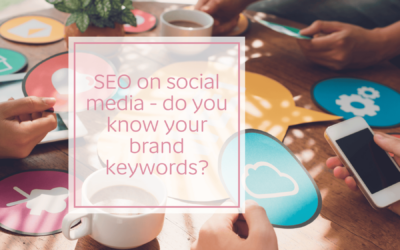Your brand is so much more than your logo – it’s what people think (or feel) when they see your logo or think about your brand.
A brand strategy, even a simple one, helps shape your reputation by guiding both internal decisions and external presentations of your business. Think of it as your roadmap.
Brand strategy – a roadmap to shape your reputation
If your brand is your business reputation, your brand strategy is the roadmap to building it.
More than just a marketing guide; it’s your guiding light – the strategy behind the most complex business choices and simple marketing decisions.
Micro businesses with one person as the face of the business, may incidentally sound the same everywhere, because every interaction is with the same person. But this can become challenging as you grow. Defining your brand and strategy early helps you:
- Grow your team with people who share your brand values
- Make strategic decisions that align with your brand mission
- Represent your brand consistently in person, on social media, and in every customer interaction
- Build recognition and eventually trust with your ideal customers, potential peer collaborators, and even your local community
Small business brand strategy – start simple
Luckily, your brand strategy doesn’t have to be complex or detailed. I’m sure some have managed it scribbled on the back of a napkin, though I suggest you start with a note or document on your computer – much less likely to get water spilt on it! The key is to get your brain, and brand, thinking strategically. Consider:
- Why does your business exist? Outline your mission, values, vision, competitive market analysis and unique selling points.
- How do you want people to feel about your business? Safe, supported, entertained, inspired, or something else entirely?
- What actions can your business take to encourage (or create) that feeling?
- Sales journey: How can you align every step from product description, purchase experience, and even after care, with your brand values and ensure the customer experiences your brand the way you want them to?
- Marketing and communications: How and where will you communicate your brand to customers? What does it look and sound like? (Consider a short style guide)
- Product or service: Does your product deliver? Is there anything you need to tweak to ensure it does?
Brand strategy – part of your social media strategy
Once you have the basics decided, you need to use it to guide your social media. Every touch point, on every platform, at every point of the customer journey, needs to be aligned to your brand strategy. Let’s consider an example:
Isla’s Coaching is on a mission to help disillusioned school leavers discover their path in life, building their confidence and optimism about the future. She trained as a life and careers coach because of her own experience after a disappointing HSC result. Brand values: Empathic, practical, inclusive. Mission: To help teens and parents feel hopeful and empowered about life and choices beyond high school. Actions currently taken:
- Customer experience: All enquiries receive an automated reply then a personal reply within 24 hours. All replies include several resources including a 24-hour crisis care hotline.
- Website: Isla has shared her personal story to her website, showing school leavers what is possible while simultaneously letting them know she really does understand them.
- Resources: Isla has collected a wide range of resources including local free and subsidised training programs for school leavers, local businesses that regularly offer work experiences to senior students, and complimentary services for resume writing and interview clothing.
This simple brand strategy, backed with initial actions makes a social media strategy easy.
- Content pillars (areas of expertise aligned to Isla’s clients):
- High school – subjects, tutoring, perspective.Career paths – industries, training options, alternative pathways.
- Parenting – support and success stories to show parents the light at the end of the tunnel.
- Tone and style:
- Friendly and approachable but also experienced and knowledgable. Visual images of professions and options where young people can see themselves, so all people need to be looking away from the camera.
- Social media platforms:
- LinkedIn for authority with parents and personal brand for peersYouTube, especially YouTube shorts, for connecting with teensInstagram for both parents and teens
- Content suggestions:
- Curated resharing of relevant practical advice and opportunities to showcase expertise and industry knowledge
- Isla’s story and how the brand came to exist to build connection and show understanding
- Testimonials and the benefits of working with an external coach to build trust with parents
- Inspirational quotes, statistics, and reminders that we all have options to leave readers feeling optimistic
- Promotions highlighting services for school leavers and their families
Personal branding – your small business advantage
For small business owners, your personal brand (or reputation) is as important as your business brand. If your personal brand is strong and aligned to your business brand, it can humanise your business, showcase your expertise, and build stronger connections – building trust, sales, and brand loyalty.
Simple ways to build your personal brand to your business advantage:
- Network locally: People buy from people, so meet your ideal customer in-person, share your passion and values, and let them know where to find you.
- Use a LinkedIn personal account: Connect with people you met while networking, share your insights and industry tips, and engage with potential industry collaborators.
- Guest appearances: Showcase your expertise as a guest on podcasts, events, local media, or peer newsletters and blogs.
Struggling to define your brand? A little strategy goes a long way – get started with my upcoming workshop. Sign up to my newsletter for more info.



